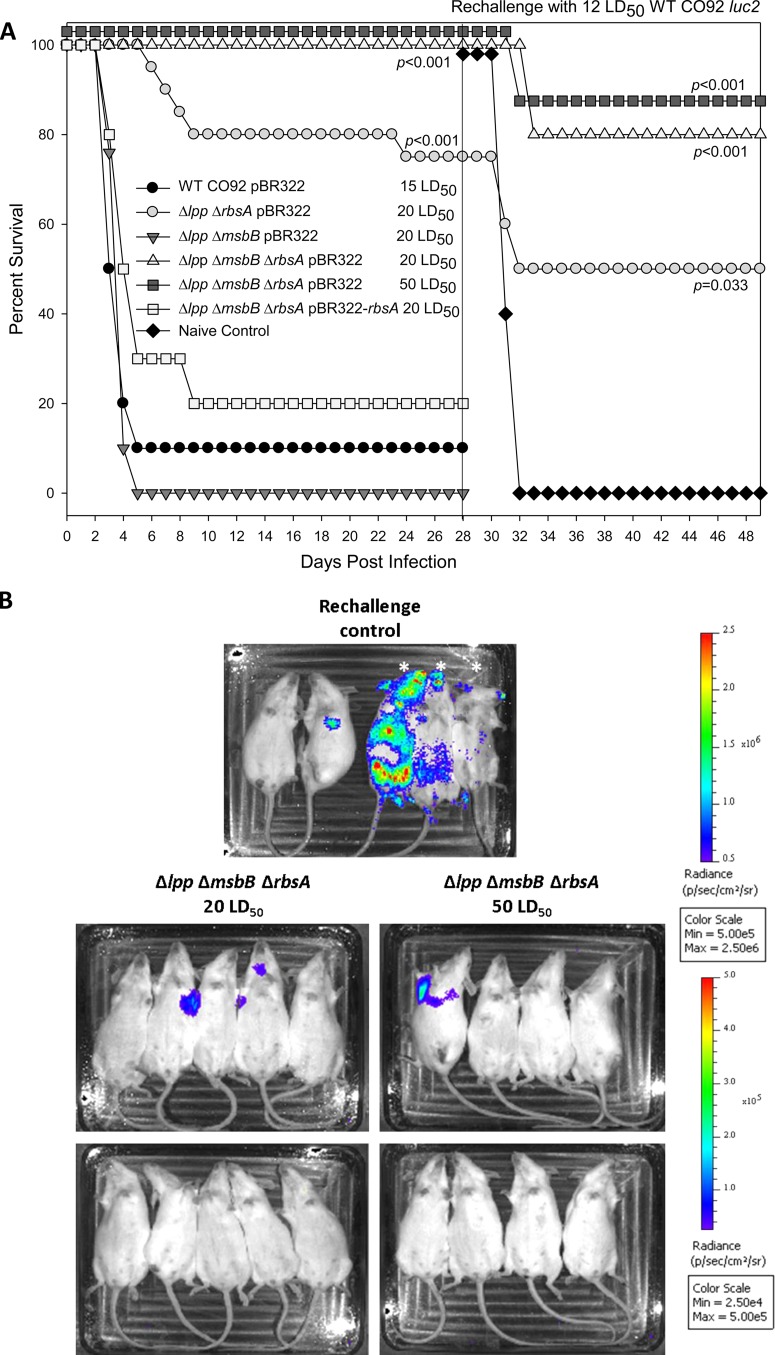FIG 7.
Survival of mice after initial infection with the ΔrbsA isogenic mutants of Y. pestis CO92 in a pneumonic plague model, subsequent rechallenge with WT CO92 luc2, and evaluation of bacterial burden with the IVIS system. (A) Adult Swiss-Webster mice were challenged by the i.n. route with the WT CO92(pBR322) (n = 10), Δlpp ΔrbsA(pBR322) (n = 20), Δlpp ΔmsbB(pBR322) (n = 10), Δlpp ΔmsbB ΔrbsA(pBR322) (20 LD50, n = 10), Δlpp ΔmsbB ΔrbsA(pBR322) (50 LD50, n = 8), or Δlpp ΔmsbB ΔrbsA(pBR322-rbsA) (n = 10) strain at the indicated LD50 and observed for mortality over a period of 28 days. The mice that survived the initial challenge with a mutant strain and naive control animals (n = 5) were rechallenged or challenged with 12 LD50 of the WT CO92 luc2 (with luciferase gene) strain. Survival data were analyzed for significance by Kaplan-Meier survival estimates with the Bonferroni post hoc test. The P values are for comparison of the results for the indicated strains to the results for WT CO92 (challenge experiment) or naive control challenged with WT CO92 luc2 (rechallenge experiment). (B) On day 3 after rechallenge, selected groups of mice were imaged using the IVIS system to determine their relative bacterial burdens. In the WT CO92-challenged group, three mice, indicated by asterisks, were found dead before the imaging.

